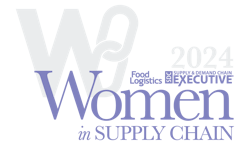
We’ve seen plenty of innovation when it comes to inventory management, from sourcing and procurement to AI and augmented reality. But there is still a key piece of the puzzle missing when returns end up costing retailers an estimated $800 billion in revenue. One possible way for retailers and manufacturers to unlock tremendous value is to take a better look at the end of the supply chain.
With billions in lost revenue, the case for the strategic selling of excess and returned inventory could not be any clearer. Inventory management software and a just-in-time inventory approach can only go so far. A reverse logistics partner can help an organization make real-time, data-backed decisions on lotting strategies, generate buyer demand and ensure excess and returned inventory is moving in and out of warehouses on a regular cadence.
How Recommerce Helps with Inventory Management
Recommerce—the selling and buying of returned and excess inventory—can help businesses reduce the amount of unused stock in warehouses. This approach to surplus helps maintain a healthy inventory turnover rate, minimizes holding costs by quickly converting excess inventory into cash, and, with the right tools, can even boost an organization’s overall operational efficiency.
Strategically Sell to Vetted, High-volume Buyers
Direct sales and contract agreements with high-volume buyers can ensure that inventory is moving out of your warehouses in as few as five to seven calendar days. But establishing these business relationships takes time, not to mention the hassle of necessary steps including negotiating, coordinating transportation, collecting payments, and more. Further, if a trusted partner relocates, closes its doors or simply cannot take the goods you have to offer, you’ll find yourself back at square one with unrealized value taking up precious space.
Improve Recovery with Predictable Lotting Strategies
Retailers can improve recovery rates on the sale of their excess inventory with the right lotting strategies. For example, data shows that carefully assembling lots with regard to category, brand, condition, and item price can increase recovery. Knowing this, retailers can better forecast recovery and plan their business accordingly. Done correctly—that is, through data-based insights—plotting strategy can be the difference between reclaiming the cost of goods and cutting losses completely.
While there are best practices that reliably improve resale performance, perfecting your strategy is far from simple, given how many variables a modern business’ product catalog contains. Consider an apparel retailer that manages hundreds to thousands of clothing items varied in style, size, cut, material and color. For example, selling a ten-pallet lot of extra large green merino wool leggings is an easy move, but a buyer likely wouldn’t find this lot too enticing. Using the right data, retailers can determine the best combination of SKUs to include in each lot to give buyers an appealing balance between consistency and variety. A partner that specializes in apparel recommerce can look at your past performance, the performance of other clients, and the market at large in order to forecast your sales accurately and optimize your approach over time.
Maintain Compliance Throughout the Resale Process
Reselling certain categories of goods—consumer electronics for one example—involves additional levels of grading, reconditioning and red tape.
In particular, the mobile device secondary market has many environmental and legal issues surrounding refurbishment, redistribution and recycling efforts. With data wiping and privacy concerns, along with the costly and time-consuming task of proper reclamation or disposal of components, wireless providers and manufacturers should look to dedicated platforms and advisors.
In this instance, an expert organization with the right insights and connections can make an extremely complex process fast and profitable by ensuring a consistent, competitive pool of trusted industry-certified buyers. With such compliance concerns handled, employees’ focus can shift to other areas of operation.
Partner with Reverse Logistics Experts
Traditional inventory management solutions, paired with a reverse logistics partner to provide a suite of resale solutions, can help businesses succeed in the face of mounting returns and other excess stock.
Analytics Usher Strategic Inventory Management Decisions
Once in place, modern inventory systems make recordkeeping easy, but without regular analysis and adjustment, an endless archive of numbers is useless.
Quality data can be leveraged to understand seasonal demand and fine-tune stock levels. Or you can use it to identify which products are most prone to returns, highlighting opportunities to offer better descriptions or AR-based shopping tools. Analyzing the returned items can even provide insights into changing consumer preferences and quality or design issues. This reveals a chance to tighten up the production chain by developing new manufacturing processes or changing suppliers.
Reliability, Flexibility & Velocity—All at Scale—Are Key
Reducing the number of days that inventory spends in warehouses is paramount. With new orders always coming in and fulfillment constantly underway, excess goods are dead weight in a business sense; their value is degrading while they take up storage space, and require security, transportation, and more. But with proper advisement and a fully managed suite of reverse logistics solutions, retailers can arrange contracts to resell massive amounts of recurring excess in a fast and predictable way.
For irregular or one-off lots outside your organization's expertise, a fit partner should be able to arrange a one-time, high-competition flash auction between handpicked bidders. Or perhaps your business finds itself consolidating locations, upgrading facilities or rebranding. The best partners can even broker direct sales of office furniture, factory equipment or retail store supplies with contacts outside your normal buyer base.
Evolving Your Approach to Excess
Plagued with ever-growing levels of overstock and customer returns, leading brands and retailers around the globe have come to realize that committing to building a modernized, optimized reverse logistics strategy does indeed deliver results. As your own organization evaluates its tech stack and looks for areas to streamline, don’t sleep on the impact of the surplus that’s quietly holding your business back. Moreover, keep in mind the many benefits of outsourcing your resource-consuming recommerce tasks to a partner with a singular focus.
Whether the goal is boosting recovery, reducing liability, optimizing warehouse operations, enhancing sustainability, adapting to shifting market dynamics, or all of the above, having the right partner in your corner can make all the difference.



![Pros To Know 2026 [color]](https://img.sdcexec.com/mindful/acbm/workspaces/default/uploads/2025/08/prostoknow-2026-color.mduFvhpgMk.png?auto=format%2Ccompress&bg=fff&fill-color=fff&fit=fill&h=100&q=70&w=100)







![Pros To Know 2026 [color]](https://img.sdcexec.com/mindful/acbm/workspaces/default/uploads/2025/08/prostoknow-2026-color.mduFvhpgMk.png?ar=16%3A9&auto=format%2Ccompress&bg=fff&fill-color=fff&fit=fill&h=135&q=70&w=240)







